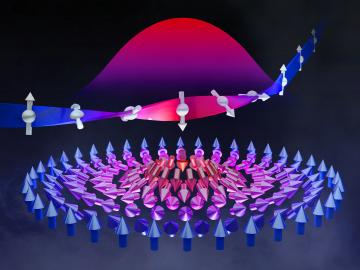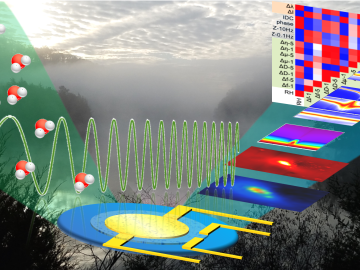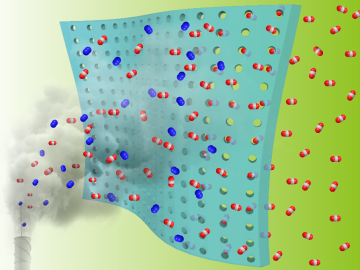
Filter News
Area of Research
- (-) Materials (69)
- Advanced Manufacturing (7)
- Biology and Environment (17)
- Building Technologies (1)
- Computational Engineering (3)
- Computer Science (13)
- Electricity and Smart Grid (1)
- Energy Science (65)
- Fusion and Fission (13)
- Fusion Energy (9)
- Isotope Development and Production (1)
- Isotopes (2)
- Materials Characterization (1)
- Materials for Computing (12)
- Materials Under Extremes (1)
- Mathematics (1)
- National Security (14)
- Neutron Science (21)
- Nuclear Science and Technology (10)
- Quantum information Science (4)
- Sensors and Controls (1)
- Supercomputing (59)
- Transportation Systems (1)
News Type
News Topics
- (-) Computer Science (9)
- (-) Fusion (4)
- (-) Grid (2)
- (-) Machine Learning (2)
- (-) Materials Science (54)
- (-) Molten Salt (3)
- (-) Quantum Science (11)
- (-) Space Exploration (1)
- 3-D Printing/Advanced Manufacturing (19)
- Advanced Reactors (2)
- Artificial Intelligence (4)
- Bioenergy (9)
- Biology (4)
- Biomedical (5)
- Buildings (3)
- Chemical Sciences (24)
- Clean Water (1)
- Composites (7)
- Coronavirus (3)
- Critical Materials (13)
- Cybersecurity (3)
- Energy Storage (26)
- Environment (8)
- Exascale Computing (1)
- Frontier (2)
- High-Performance Computing (2)
- Isotopes (7)
- ITER (1)
- Materials (50)
- Microscopy (18)
- Nanotechnology (29)
- National Security (3)
- Neutron Science (22)
- Nuclear Energy (5)
- Partnerships (8)
- Physics (16)
- Polymers (12)
- Quantum Computing (2)
- Security (1)
- Summit (1)
- Transportation (10)
Media Contacts

Led by ORNL and the University of Tennessee, Knoxville, a study of a solar-energy material with a bright future revealed a way to slow phonons, the waves that transport heat.

Researchers at ORNL used quantum optics to advance state-of-the-art microscopy and illuminate a path to detecting material properties with greater sensitivity than is possible with traditional tools.

Oak Ridge National Laboratory scientists have discovered a cost-effective way to significantly improve the mechanical performance of common polymer nanocomposite materials.

Scientists discovered a strategy for layering dissimilar crystals with atomic precision to control the size of resulting magnetic quasi-particles called skyrmions.

A team led by Oak Ridge National Laboratory developed a novel, integrated approach to track energy-transporting ions within an ultra-thin material, which could unlock its energy storage potential leading toward faster charging, longer-lasting devices.

An all-in-one experimental platform developed at Oak Ridge National Laboratory’s Center for Nanophase Materials Sciences accelerates research on promising materials for future technologies.

Real-time measurements captured by researchers at ORNL provide missing insight into chemical separations to recover cobalt, a critical raw material used to make batteries and magnets for modern technologies.

Five researchers at the Department of Energy’s Oak Ridge National Laboratory have been named ORNL Corporate Fellows in recognition of significant career accomplishments and continued leadership in their scientific fields.

Oak Ridge National Laboratory scientists seeking the source of charge loss in lithium-ion batteries demonstrated that coupling a thin-film cathode with a solid electrolyte is a rapid way to determine the root cause.

Researchers at the Department of Energy’s Oak Ridge National Laboratory and the University of Tennessee, Knoxville, are advancing gas membrane materials to expand practical technology options for reducing industrial carbon emissions.


